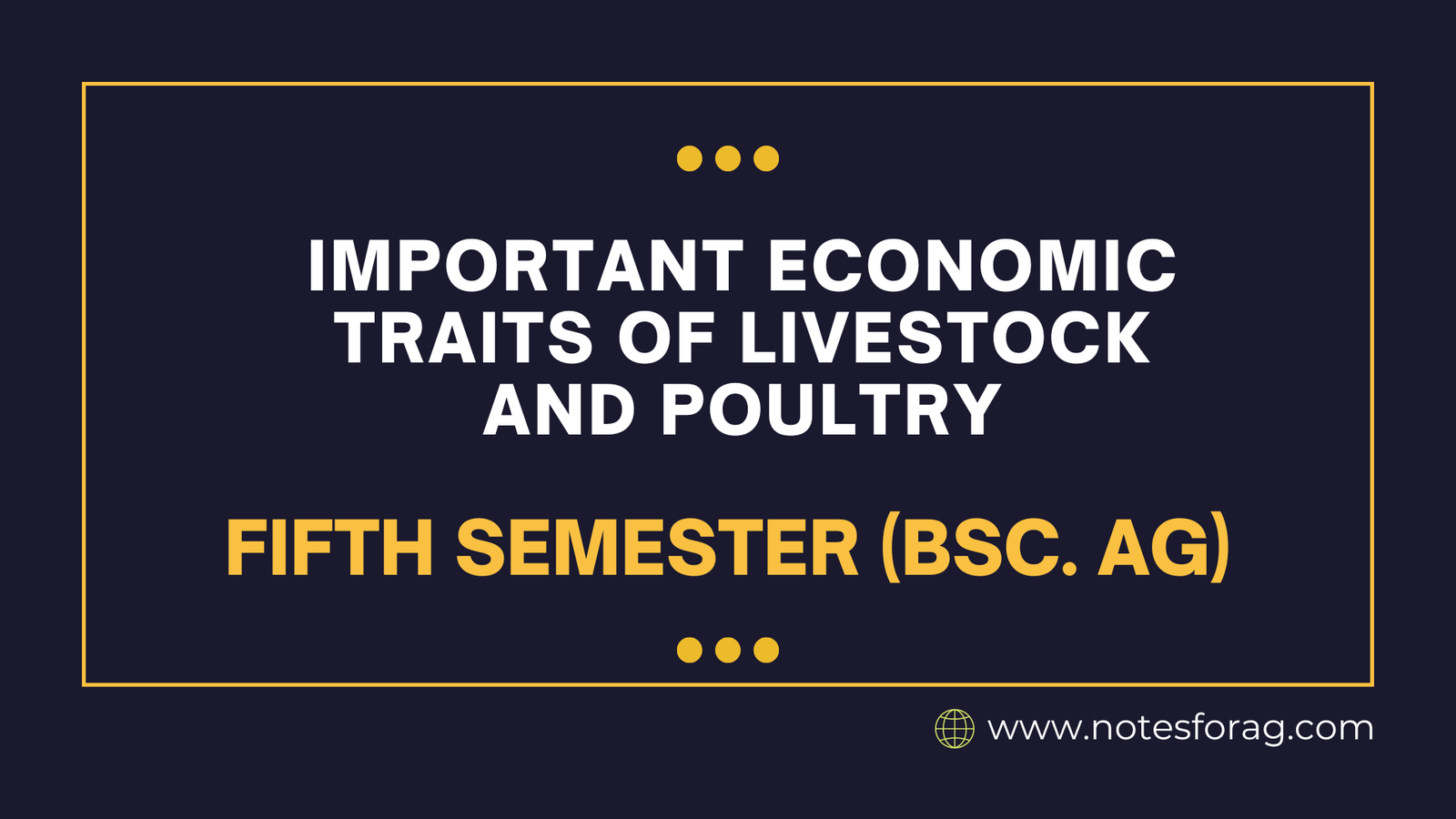Important economic traits in livestock and poultry include characteristics that have a direct impact on productivity and profitability in farming systems. These characteristics include growth rate, feed efficiency, reproductive success, carcass quality, milk or egg production, illness resistance, and adaptation to changing environmental conditions. By focusing on both livestock and poultry characteristics, producers may increase production, lower costs, and fulfill market demands, making them crucial for long-term and effective agricultural operations.
Table of Contents
Introduction to Economic Traits
Economic traits are the characteristics of livestock and poultry that have a substantial impact on their market value and profitability in agricultural production systems. These characteristics include a number of variables that can have a direct impact on the overall economics of animal husbandry. Common economic characteristics include growth rate, feed efficiency, reproductive success, and disease resistance. Understanding these qualities is vital for farmers and producers because they influence the viability and sustainability of livestock operations.
Economic features are important for making educated breeding and management decisions, in addition to providing direct cash gains. Producers can improve production efficiency, lower operational costs, and increase income by selecting animals with advantageous economic characteristics. For example, choosing breeds with higher feed conversion ratios can result in cheaper feed expenses, which is important considering that feed costs often account for a large amount of total livestock production costs.

Important Economic Traits in Livestock
1. Growth Rate:
- This refers to how rapidly an animal reaches market weight or maturity.
- Faster growth decreases feed costs and time to market, which boosts profitability.
2. Feed Efficiency (Feed Conversion Ratio or FCR):
- The rate at which an animal transforms food into body mass.
- Animals having a lower FCR require less feed to acquire weight, resulting in lower feed expenditures.
3. Reproductive Performance:
- Fertility, litter size, and calving interval are among the qualities covered.
- High reproductive efficiency assures a consistent supply of progeny, which increases herd or flock productivity.
4. Carcass Quality:
- Muscle mass, fat distribution, and marbling are examples of meat animal traits.
- Better carcass quality leads to greater market pricing and consumer demand.
5. Milk Production for Dairy Animals:
- The amount of milk produced, as well as its butterfat and protein composition.
- Higher milk yield from quality components boosts dairy farm profitability.
6. Meat Yield:
- Total edible meat produced per animal, defined in terms of dressing percentage or meat-to-bone ratio.
- Maximum meat yield is critical for meat production systems.
7. Disease Resistance:
- Resistance to common illnesses and parasites, resulting in lower veterinary costs and productivity losses.
- Genetically resistant breeds are less reliant on drugs and therapies.
8. Longevity and Durability:
- A longer productive life lowers replacement costs and assures consistent productivity.
- Particularly significant in dairy cows and breeding animals.
9. Adaptation to Environmental Conditions:
- The ability to thrive in specific climates or production systems (for example, heat tolerance and resistance to harsh surroundings).
- Increases productivity across several geographic regions while lowering management expenditures.
Important Economic Traits in Poultry
1. Egg Production (Layers):
- The number of eggs produced over a specific time period (for example, a year).
- High egg output, paired with good egg quality (shell strength and size), is critical for profitability in layer farms.
2. Growth Rate for Broilers:
- How quickly broilers achieve market weight.
- Faster growth lowers feed and housing expenses, boosting returns.
3. Feed conversion ratio (FCR):
- The rate at which fowl convert feed into body mass or eggs.
- A lower FCR reduces feeding expenses, making production more economical.
4. Egg quality:
- Shell strength, size, and yolk color are all essential factors in consumer preference.
- Eggs with better quality characteristics get higher market pricing.
5. Meat Yield for Broilers:
- Total meat produced is frequently expressed in terms of breast meat yield and overall carcass weight.
- Higher output and high meat quality (tenderness, texture) are critical to meat production profitability.
6. Disease Resistance:
- Poultry with genetic resistance to common diseases (e.g., Newcastle disease, avian influenza) require fewer vaccines and treatments, which reduces expenses.
7. Hatchability:
- The proportion of fertilized eggs that successfully hatch into chicks.
- High hatchability rates are critical in chicken breeding operations.
8. Egg Laying Persistence:
- The ability of laying chickens to produce eggs for an extended length of time.
- Long-lasting egg production reduces the need for regular layer replacements, lowering costs.
9. Feathering and Plumage Quality:
- In some systems, adequate feather coverage lowers heat loss and improves overall bird health.
- Aesthetic considerations are also significant in certain poultry breeds used for displays or ornamentation.
10. Body Conformation:
- Body shape and size in broilers influence meat quality and market demand.
- Breeds with more appealing body types yield more profits in meat production.
Economic traits in livestock and poultry are critical for maximizing productivity, lowering expenses, and increasing profitability in agricultural systems. To suit the demands of contemporary farming, these qualities are typically selected through breeding programs and genetic control.
Frequently Asked Questions
Why are economic traits important in livestock and poultry?
Economic traits in livestock and poultry are vital for maximizing productivity, lowering expenses, and increasing profitability in agricultural systems. To suit the demands of contemporary farming, these qualities are typically selected through breeding programs and genetic control.
What are the key economic traits for poultry production?
Important features in poultry include egg production (layers), growth rate (broilers), feed conversion ratio (FCR), egg quality, disease resistance, and hatchability.
Related Articles

